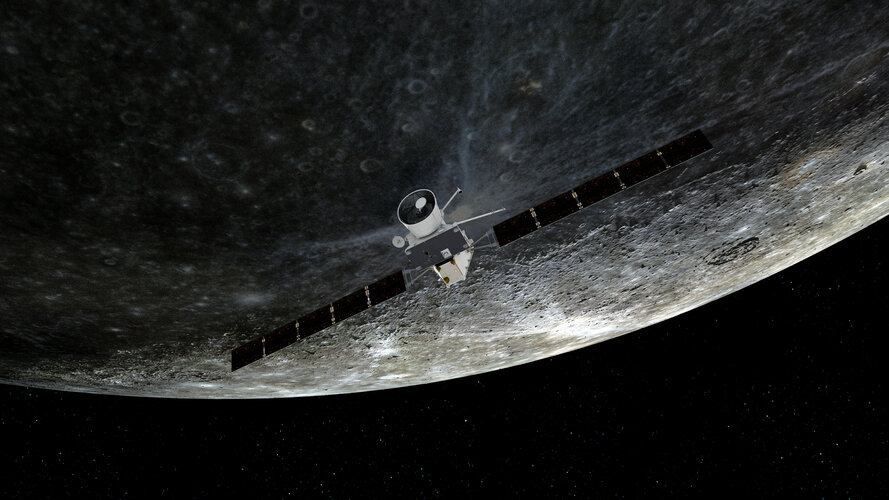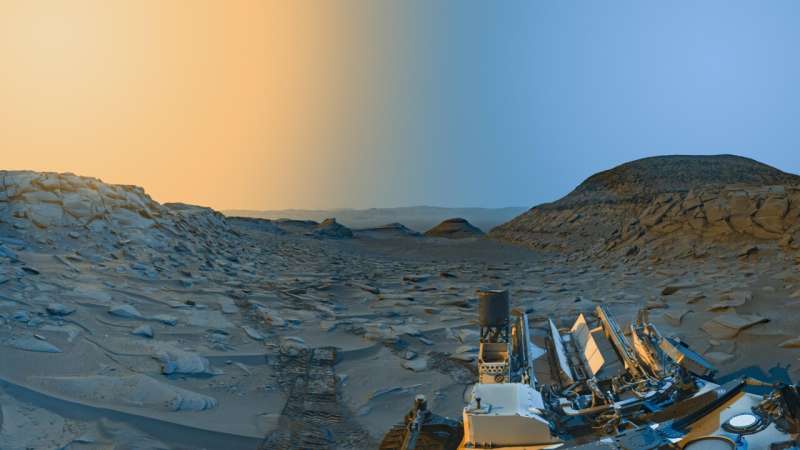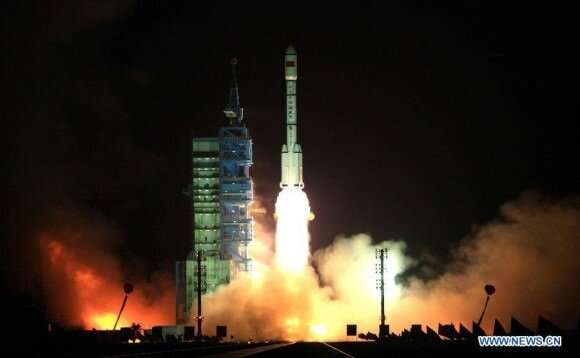BepiColombo braces for third Mercury flyby
Wednesday, 14 June 2023 07:00
The ESA/JAXA BepiColombo mission is gearing up for its next close flyby of Mercury on 19 June, when it will pass the planet’s surface at an altitude of about 236 km.
Ariane 5 flight VA261: launch delay
Wednesday, 14 June 2023 07:00
The Ariane 5 flight scheduled for 16 June has been delayed. Launch operator Arianespace announced on Twitter: "It has come to light that there is a risk to the redundancy of a critical function on the Ariane 5. Consistent with safety requirements, Arianespace has decided to postpone the roll-out of the VA261 launch vehicle. Analyses are underway to determine a new launch date."
More information to come.
U.N. opens “window of opportunity” to improve space governance
Wednesday, 14 June 2023 06:35
A United Nations official says there is an opportunity over the next 15 months to improve how nations manage space activities to address emerging issues ranging from orbital debris to space resources.
Satellite execs call for more data to improve space sustainability
Wednesday, 14 June 2023 00:30
A lack of data and collaboration continues to hold back efforts to ensure a sustainable orbital environment, satellite operator executives said June 13.
DARPA downsizes Blackjack space experiment
Wednesday, 14 June 2023 00:00
The Defense Advanced Research Projects Agency on June 12 launched four satellites for a technology demonstration in low Earth orbit.
Op-ed | To Open the Space Frontier, CLD Must Not Fail
Tuesday, 13 June 2023 20:39
NASA’s focus on human exploration beyond LEO reaching to the Moon and beyond is nothing less than thrilling. Last month, the Artemis 2 crew members were announced, and NASA has […]
To Open the Space Frontier, CLD Must Not Fail
Tuesday, 13 June 2023 20:39
NASA’s focus on human exploration beyond LEO reaching to the Moon and beyond is nothing less than thrilling. Last month, the Artemis 2 crew members were announced, and NASA has […]
NASA's Curiosity captures Martian morning, afternoon in new 'postcard'
Tuesday, 13 June 2023 20:01
After completing a major software update in April, NASA's Curiosity Mars rover took a last look at "Marker Band Valley" before leaving it behind, capturing a "postcard" of the scene.
The postcard is an artistic interpretation of the landscape, with color added over two black-and-white panoramas captured by Curiosity's navigation cameras. The views were taken on April 8 at 9:20 a.m.
Opinion: Virgin Galactic's use of the 'Overview Effect' to promote space tourism is a terrible irony
Tuesday, 13 June 2023 20:01
Virgin Galactic, the space tourism company founded in 2004 by Richard Branson, promotes its flights as offering "a brand new perspective: Deepen your connection to Earth and to humanity with the transformational experience known as the Overview Effect."
First discussed in 1987 by space philosopher Frank White, the Overview Effect is a result of viewing Earth from space.
Expressions of the effect range broadly. Astronauts might experience profound awe and wonder at the perception of Earth as a fragile living being. Some suffer crushing grief when considering the harm humans inflict on nature.
China is trying to stop its boosters from randomly crashing into villages
Tuesday, 13 June 2023 17:53
China's space program has advanced by leaps and bounds in a relatively short time. However, it has suffered some bad publicity in recent years due to certain "uncontrolled reentries" (aka crashes). On multiple occasions, spent first stages have fallen back to Earth, posing a potential threat to populated areas and prompting backlash from NASA and the ESA, who claimed China was taking "unnecessary risks." To curb the risk caused by spent first stages, China has developed a parachute system that can guide fallen rocket boosters to predetermined landing zones.
According to the Chinese Academy of Launch Vehicle Technology (CALT), which developed the system, the system was successfully tested on a Long March-3B (CZ-3B) rocket on Friday, June 9th. As they indicated in their statement, a review of the test data and an in-situ analysis of the debris showed that the parachute system helped narrow the range of the landing area by 80%.
Space Force eager to harness satellite-servicing technologies
Tuesday, 13 June 2023 15:00
The Space Force is investing in early-stage technologies and laying out a strategy to buy commercial services to refuel and service satellites in geostationary orbit by the early 2030s.
Air Force orders a Viasat-3 terminal to demonstrate space relay service
Tuesday, 13 June 2023 12:59
The Air Force Research Laboratory has ordered a Viasat-3 space terminal that will be used to demonstrate communications services for low-Earth orbit spacecraft.
Rogers in draft NDAA bill presses Air Force on relocation of U.S. Space Command
Tuesday, 13 June 2023 10:39
House Armed Services Committee Chairman Rep. Mike Rogers (R-Ala.) on June 12 released his proposed bill for the National Defense Authorization Act for Fiscal Year 2024, known as the chairman’s mark.
Space Systems Command preps for West coast launch of 3 experimental satellites
Tuesday, 13 June 2023 08:36 Space Systems Command (SSC)'s Space Domain Awareness and Combat Power (SDA&CP), is preparing to launch the Space Test Program (STP)-CR2301 mission to deliver three experimental satellites to Low Earth Orbit (LEO).
The STP-CR2301 mission, in partnership with the Air Force Research Laboratory (AFRL) and the Department of Defense (DoD) is scheduled to launch June 12 from Space Launch Complex
Space Systems Command (SSC)'s Space Domain Awareness and Combat Power (SDA&CP), is preparing to launch the Space Test Program (STP)-CR2301 mission to deliver three experimental satellites to Low Earth Orbit (LEO).
The STP-CR2301 mission, in partnership with the Air Force Research Laboratory (AFRL) and the Department of Defense (DoD) is scheduled to launch June 12 from Space Launch Complex Thales Alenia Space joins tema to develop Destination Earth core service platform
Tuesday, 13 June 2023 08:36 Thales Alenia Space, the joint venture between Thales (67%) and Leonardo (33%), will partner with Serco, the leader of the consortium awarded by the European Space Agency (ESA) to implement the DestinE Core Service Platform (DESP), a key element of the European Commission's flagship initiative Destination Earth (DestinE).
The objective of DestinE is to develop a highly accurate digital mod
Thales Alenia Space, the joint venture between Thales (67%) and Leonardo (33%), will partner with Serco, the leader of the consortium awarded by the European Space Agency (ESA) to implement the DestinE Core Service Platform (DESP), a key element of the European Commission's flagship initiative Destination Earth (DestinE).
The objective of DestinE is to develop a highly accurate digital mod 
